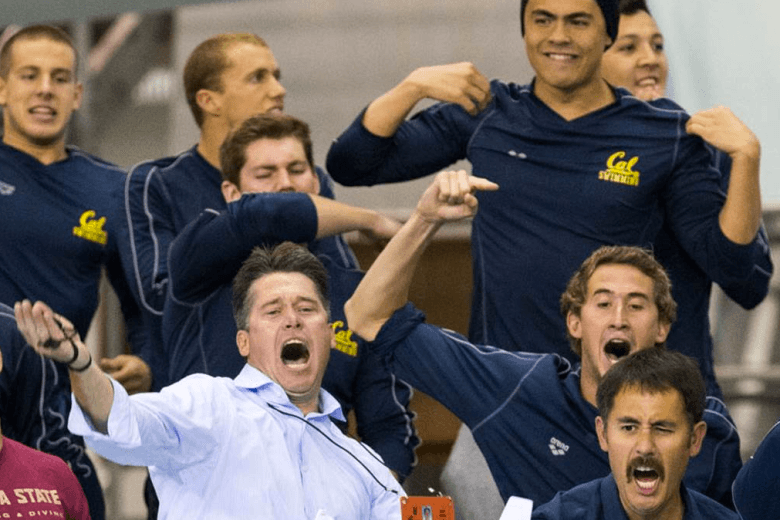Dave Durden, head coach of the Cal Golden Bears and an Arena Elite Team Ambassador, breaks down short course training.
With the 25m pool, technical aspects such as the turn, push, glide, and sprint naturally become more important – how do you work on these aspects in your preparation for a SC meet?
This is a constant aspect of our training throughout the course of the year. Over the course of a week, we will have anywhere from four to six workouts in a short course format. We will even set-up a 15m course to amplify these technical aspects. We will focus on sets that a required number of kicks off of the wall or strict body positions as the athletes leave the wall for freestyle turns.
How else does training for short course competition differ from long course? What is the main focus of training for short course competition in terms of programme, sets, etc.?
A big difference will be the sustained speed we are looking for in short course preparation compared to long course preparation. We do feel we can allow the athletes to rest a little bit more in the water while keeping an attention to dryland/weight training closer to the meet. We tend to focus on kick counts for our butterfly and backstroke specialists a little more so than in a long course competition.
What specific characteristics/qualities (both physical and technical) should a short course swimmer have compared to a long course one?
A specific characteristic a short course athlete should have compared to a long course athlete is underwater proficiency. Whether they are swimming butterfly or breaststroke, mastery of underwater movement through the kick or pull-out in a strong quality attached to a short course racer.
Are there any “signs” which suggest to a coach that an athlete might have an aptitude/inclination towards SC? If so, what are they, and at what age can they be recognized?
An athlete can show an inclination if they are a talented underwater kicker. That is always a good sign in three of the four strokes. For a breaststroker, it has to do with how they perform their pull-outs. If there is a breaststroker that has really good pull-outs, then they typically will have great performances in a short course environment.
To see the complete interview, go here to Arena’s Elite Team Channel.
About Arena
 We are 60% water. Water covers more than two-thirds of the earth we live on. Oceans, rivers and lakes, ice caps and glaciers, vapour in the air and moisture in the ground. Without water we would not survive.
We are 60% water. Water covers more than two-thirds of the earth we live on. Oceans, rivers and lakes, ice caps and glaciers, vapour in the air and moisture in the ground. Without water we would not survive.
Our instinct to swim in it runs deep. Floating figures on caves show our earliest ancestors moving across water. It is part of our collective imagination and innermost emotions. When we swim we feel the purity and power of water. Our connection with it is visceral.
Unleash your instinct. We understand it. We work to cultivate it.
We can speed up your swimming. We can maximize your performance. We can give you the confidence to dive in the pool or make the finish line. We can make the difference in your training. We will be with you at every step of your underwater journey: when you hit the water for the first time, when you set out to train and improve, when you race your heart out.
Courtesy of Arena, a SwimSwam partner.

He’s so hot
hinting at ryan hoffer on the DL